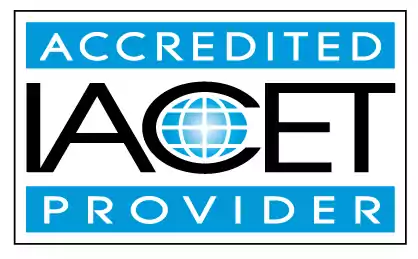Identify common interaction strategies to help promote a positive classroom environment for young children.
Central Objective: Identify common interaction strategies to promote a positive classroom environment for young children in early childhood education and child care centers. Supporting Elements: Provide practical strategies for child care providers to promote successful child development and for working with children with special needs, fostering inclusive, responsive learning communities.Trainings incorporating this outcome
CDA Subject Areas
Proficiency Level
Target Audience
Topic Areas
States
Alabama (5) Alaska (5) Alberta (5) Arizona (4) Australia (5) California (5) Colorado (5) Connecticut (5) Delaware (5) District of Columbia (4) Florida (4) Georgia (1) Hawaii (5) Idaho (5) Illinois (1) Indiana (5) Iowa (5) Jamaica (4) Kansas (4) Louisiana (5) Maine (4) Manitoba (4) Maryland (4) Massachusetts (5) Michigan (5) Minnesota (3) Mississippi (5) Montana (5) Nebraska (4) Nevada (2) New Hampshire (5) New Jersey (1) New Mexico (5) New York (4) Newfoundland and Labrador (5) North Dakota (4) Nova Scotia (4) Ohio (4) Oklahoma (3) Oregon (4) Pennsylvania (2) Prince Edward Island (4) Puerto Rico (4) Quebec (4) Rhode Island (4) Saskatchewan (5) South Carolina (1) South Dakota (5) Texas (5) Thailand (4) United Kingdom (4) Utah (4) Vermont (5) Virgin Islands (4) Virginia (5) Washington (5) West Virginia (5) Wisconsin (3) Wyoming (3)
45 hours courses
30 hours courses
24 hours courses
10 hours courses
3 hours courses
2 hours courses
Related Outcomes
- Identify strategies for the child care provider that will promote successful child development. Identify strategies for working with children with special needs
- Identify strategies to promote cultural diversity and acceptance in the child care environment.
- Identify resources to help children discover, learn, and experience in a natural play environment.
- Identify strategies to promote play in the early childhood learning environment.
- Identify the most common sources of stress for young children.
- Identify strategies that promote health and wellness for school-aged children.
- Identify strategies to promote joint attention, turn-taking, and social reciprocity for children with autism during play.
- Identify appropriate practices for identify and demonstrate an children: Identify examples of appropriate activities for different ages
- Identify appropriate practices for identify and demonstrate an children: Identify importance of individual planning
- Identify strategies to assist children with food allergies/feeding concerns
- Identify strategies in promoting sound health and safety principles for in child care.
- Identify procedures that will promote a safe environment (indoor and outdoor).
- Identify different learning styles of young children
- Define and identify common signs and behaviors of children and youth with fragile x syndrome.
- Demonstrate the elements of positive respectful relationships that include warm, nurturing interactions with children.
- Identify the components of a safe and healthy family childcare environment for children
- Identify and demonstrate positive guidance techniques that promote social competency and pro-social behavior.
- Identify communication issues that are common in the early care and education environment
- Identify strategies to make connections and interact substantively with those who are different from oneself
- Define and identify common signs and behaviors of children and youth with conduct disorder.
Related Articles
- Understanding Why Toddlers Bite
- Child care education
- Nurturing Young Minds: The Role of Early Childhood Educators in Supporting Children's Mental Health
- The Power of Play: Unleashing Potential in Early Childhood Education
- Managing Behaviors in the Early Childhood Education Classroom
- Building Social Foundations
- Mastering the Art of Emotional Intelligence: A how to Guide for Early Childhood Educators
- Handle Tiny Humans with Care: Trauma-Informed Care Tips for Early Childhood Educators
- How Educators Can Create Joyful, Inclusive Celebrations
- New Year, Fewer Tantrums: Tips for Building Strong Parent-Educator Partnerships in 2025
- Trauma-Informed Care Strategies for a Calmer 2025 Classroom
- From Chaos to Calm: New Year Hacks to Streamline Routines in Early Childhood Classrooms
- 7 Skills Every Childcare Provider Should Master
- Daycare Training 101: Building a Safe, Fun, and Educational Environment
- 🧩 Early Signs of Autism in Toddlers — What to Watch For 👀
- 🧩 How Do I Support a Student with Autism While Managing Classroom Behavior and Learning? 💕
- 🗣️ How Can I Talk to Parents About Bullying Without Blame or Conflict?🤝
 3 CEUs
3 CEUs